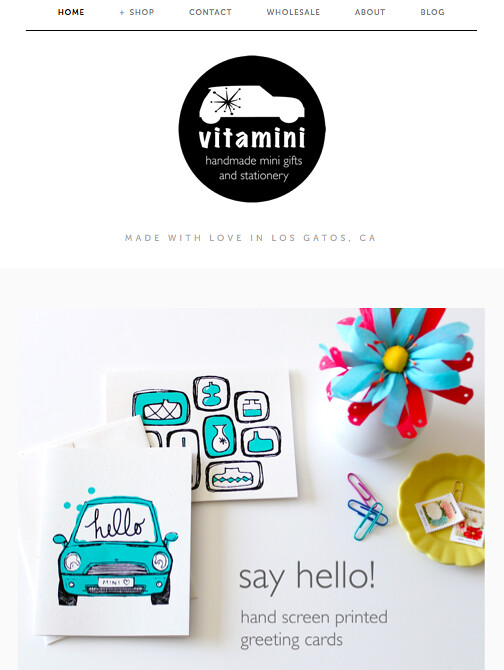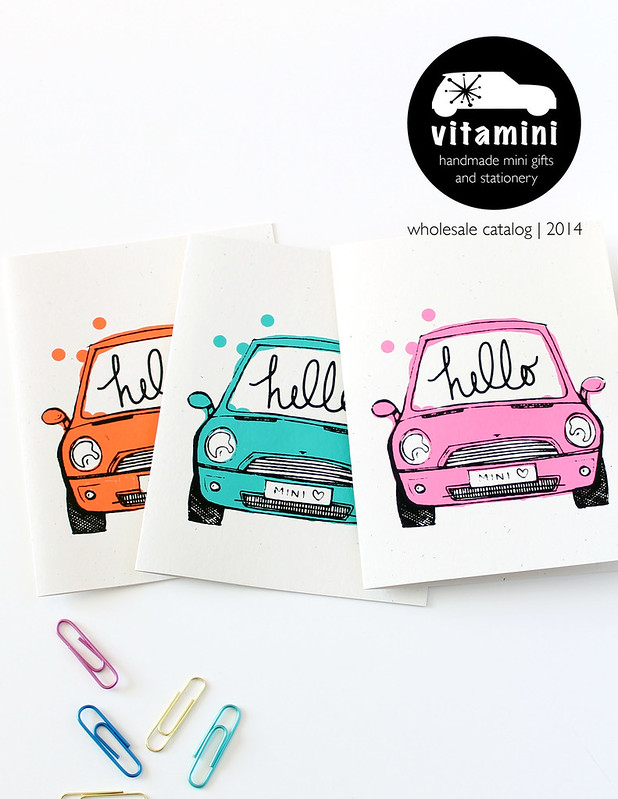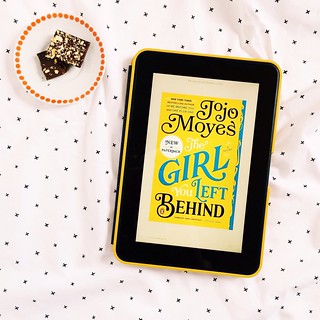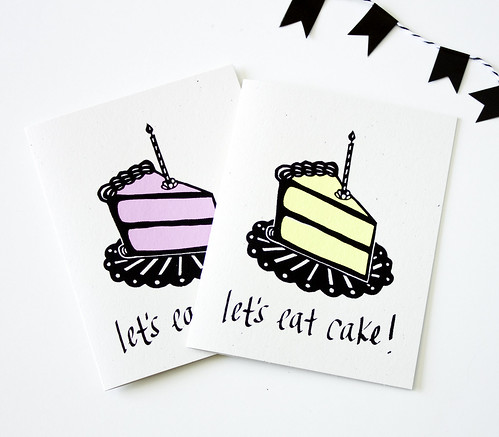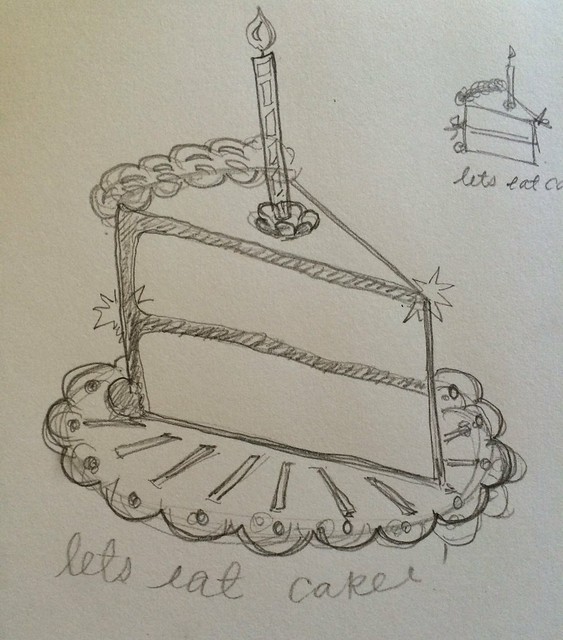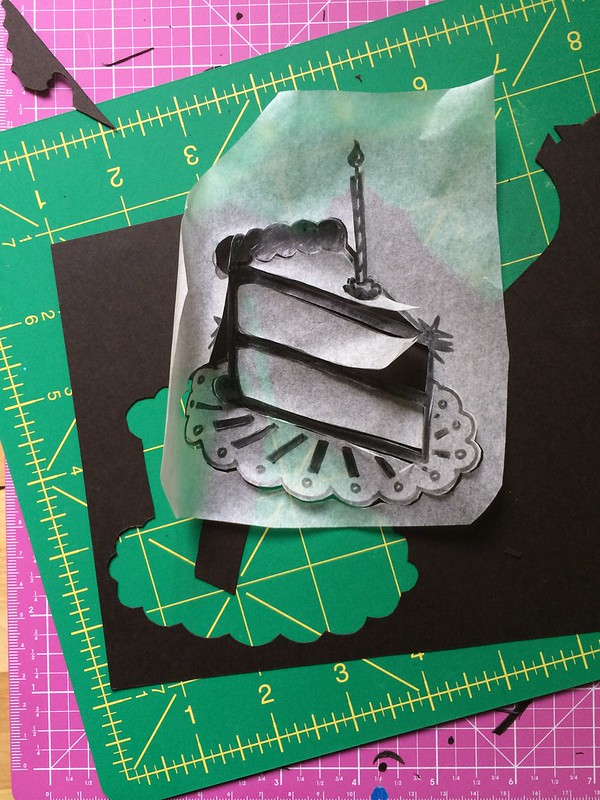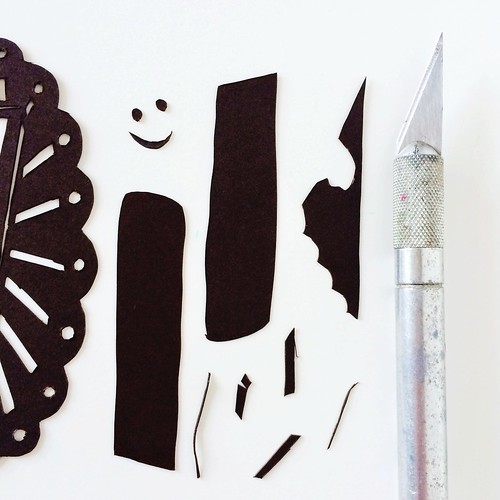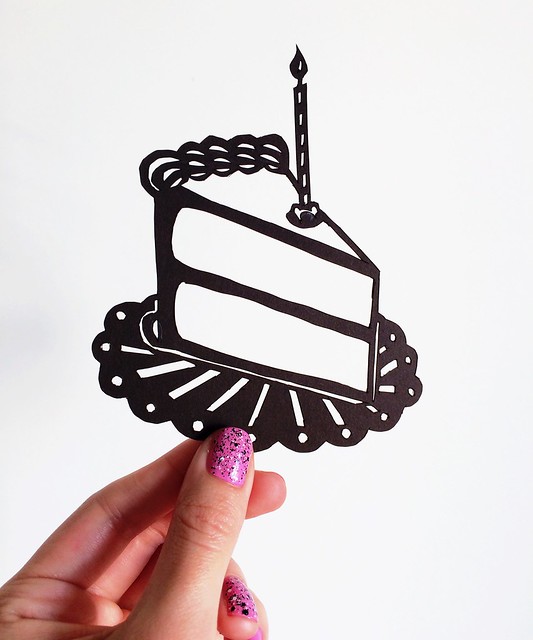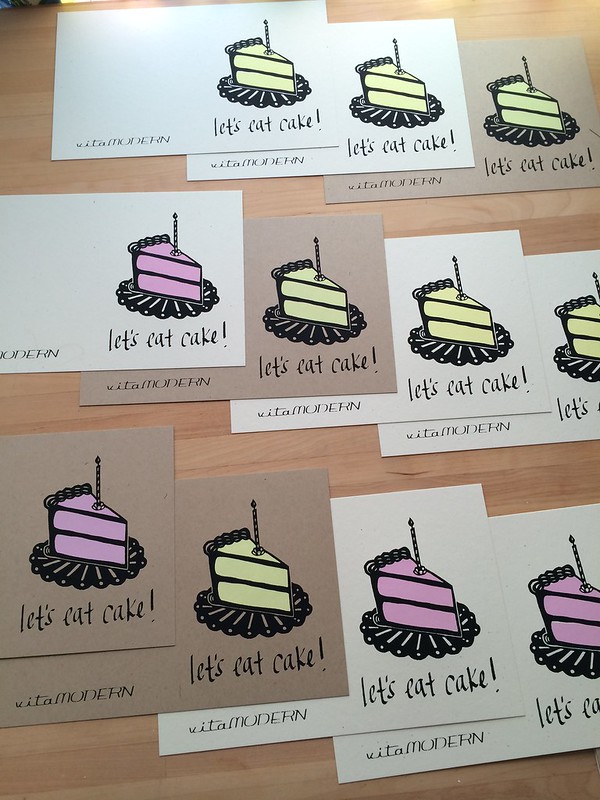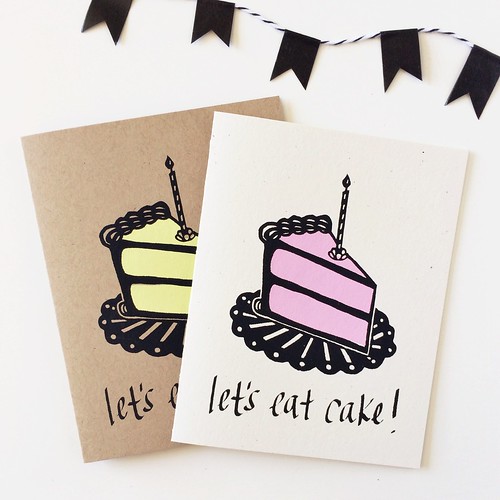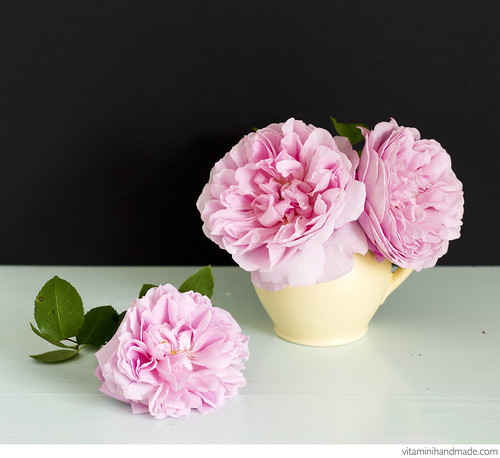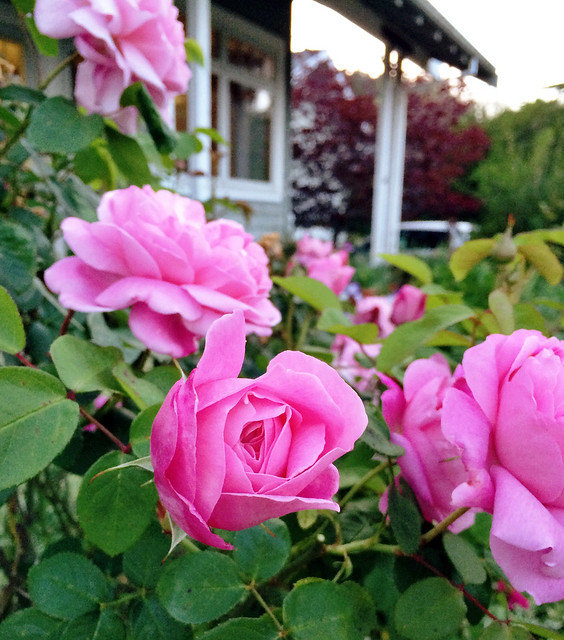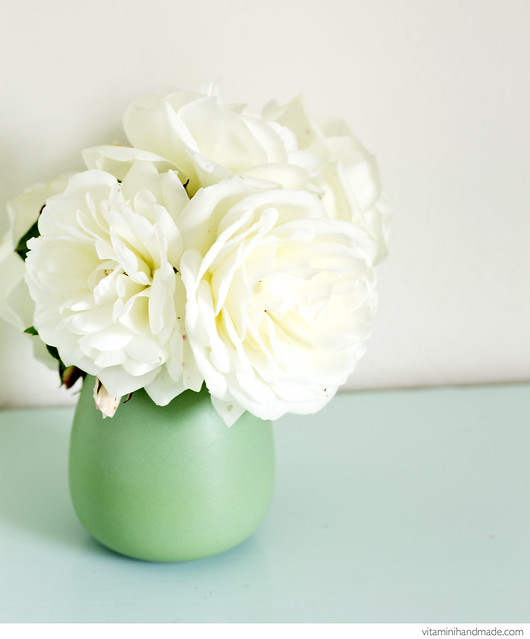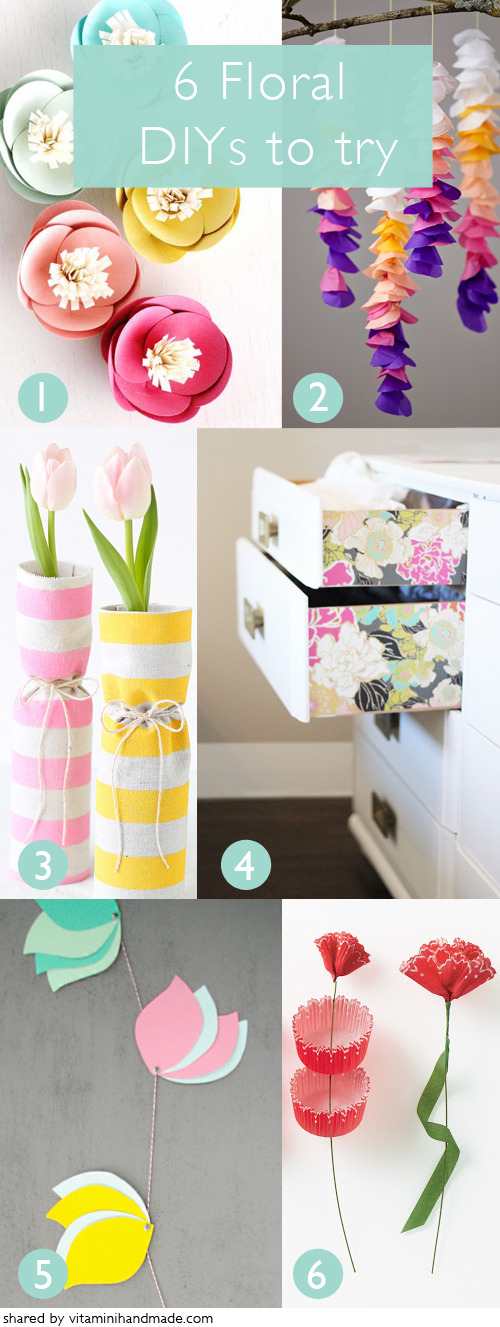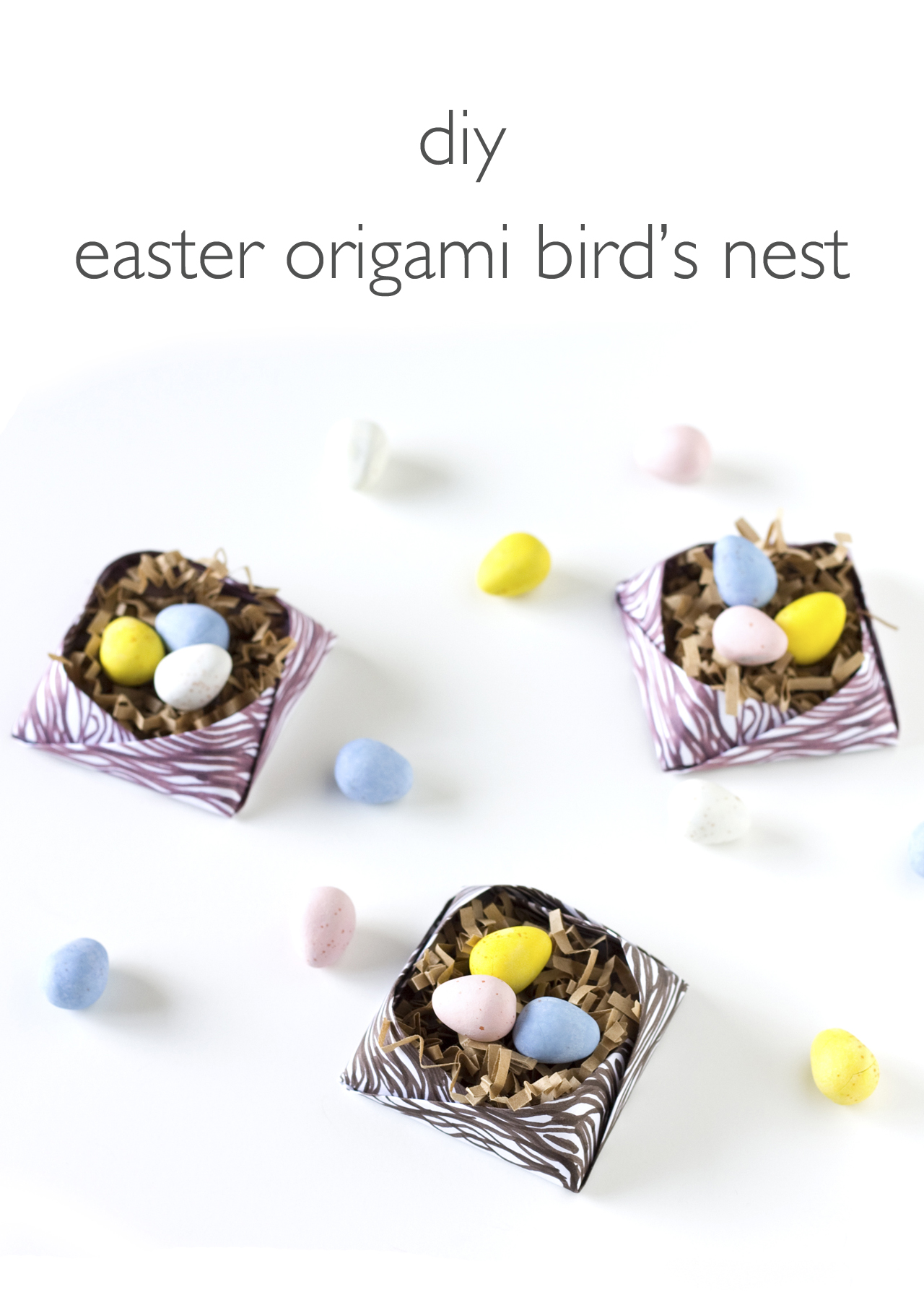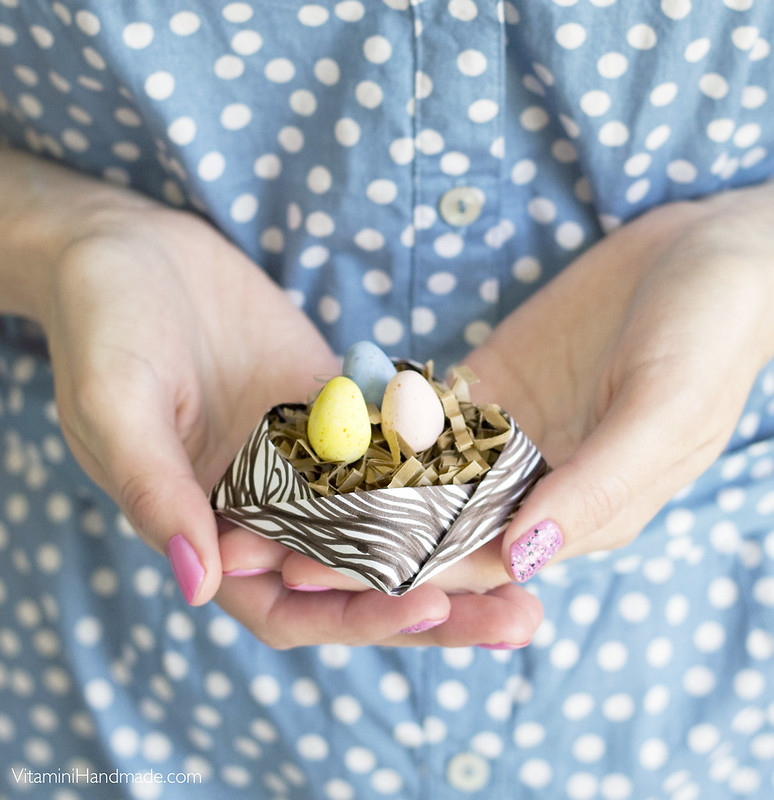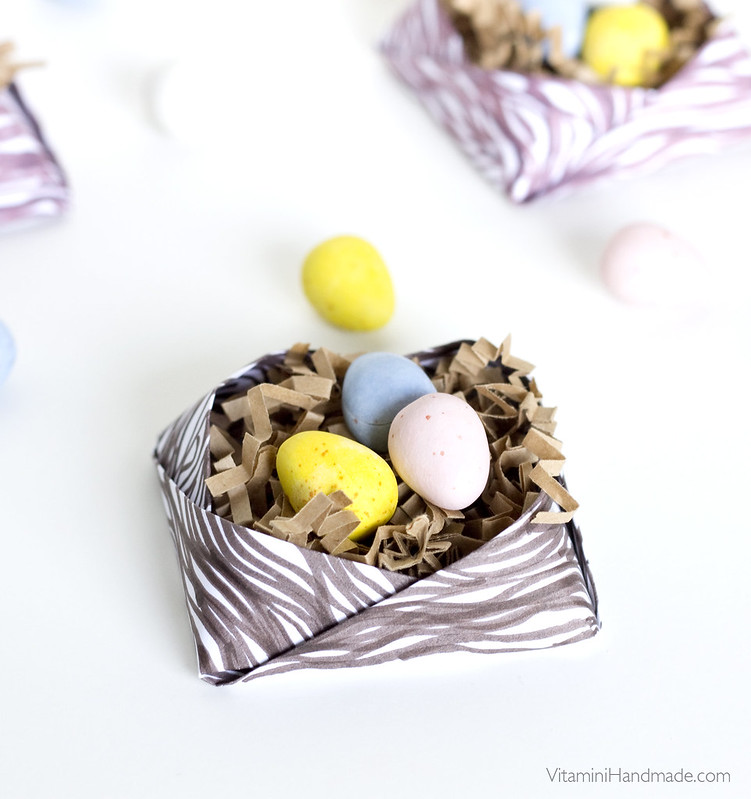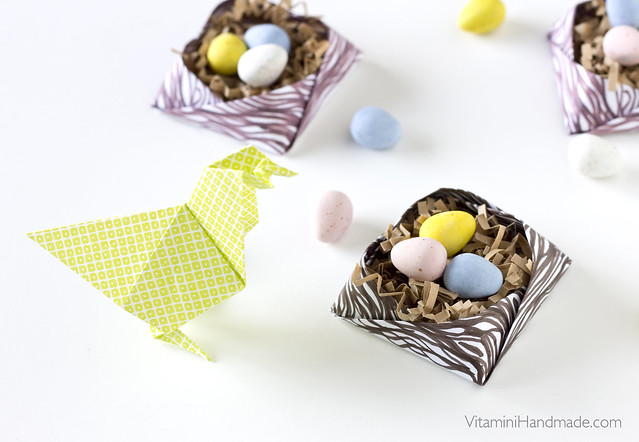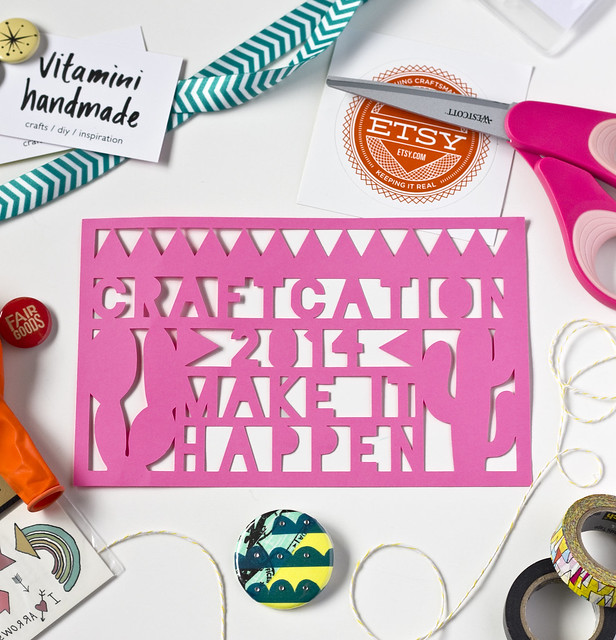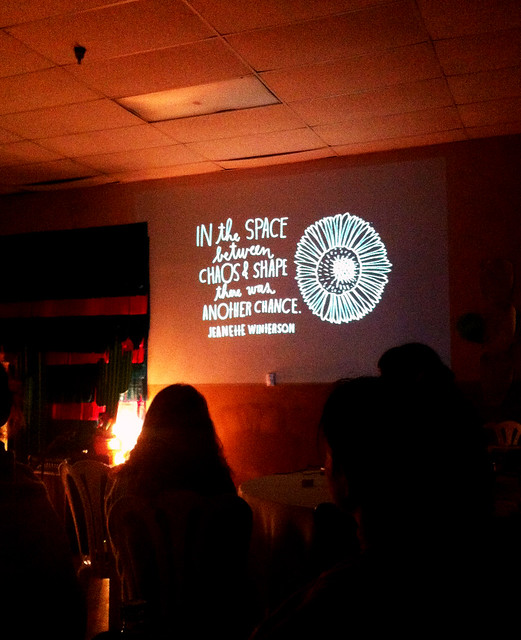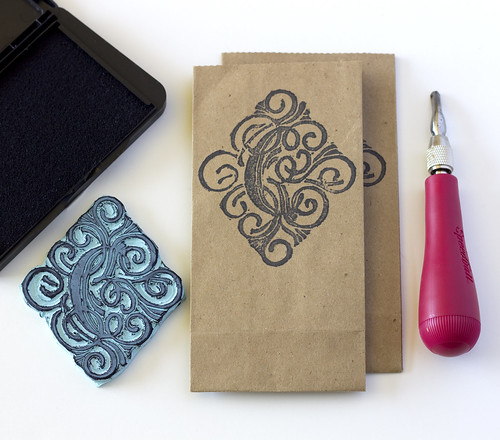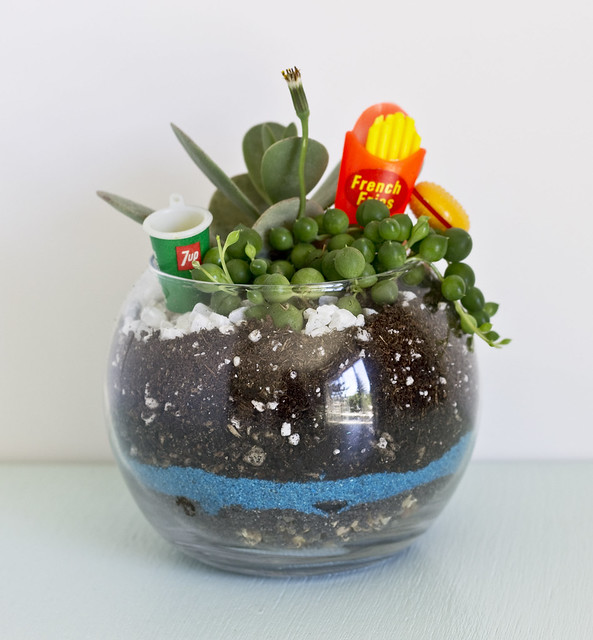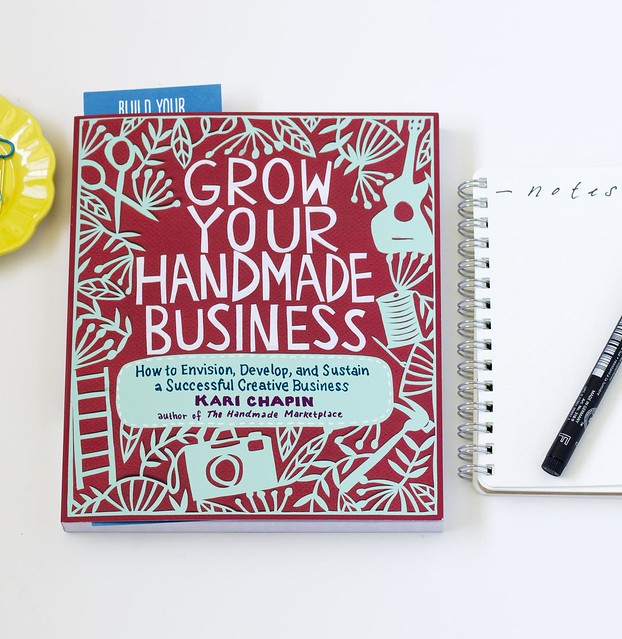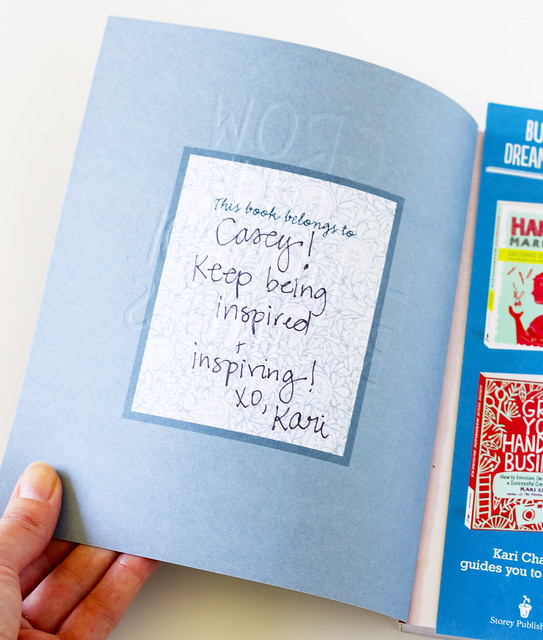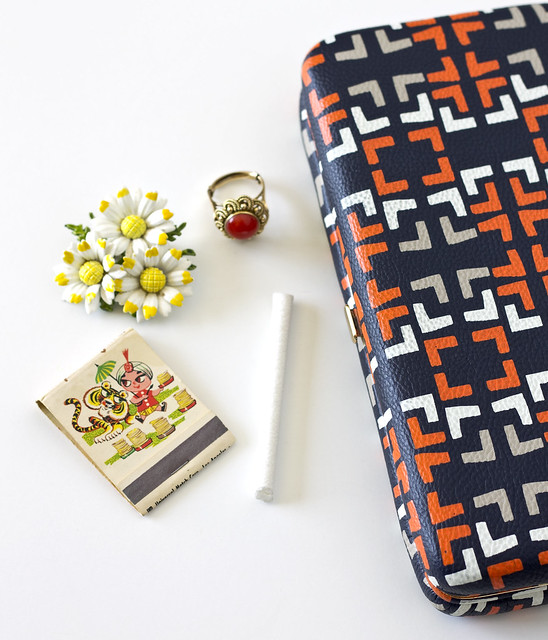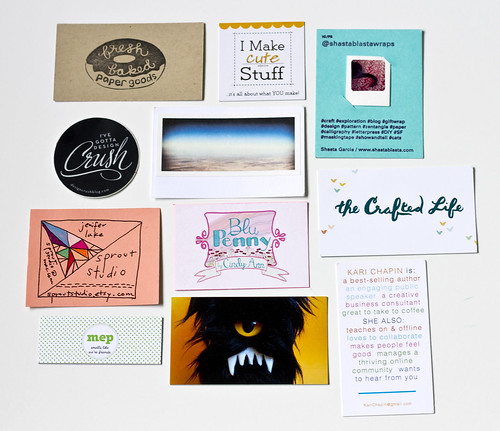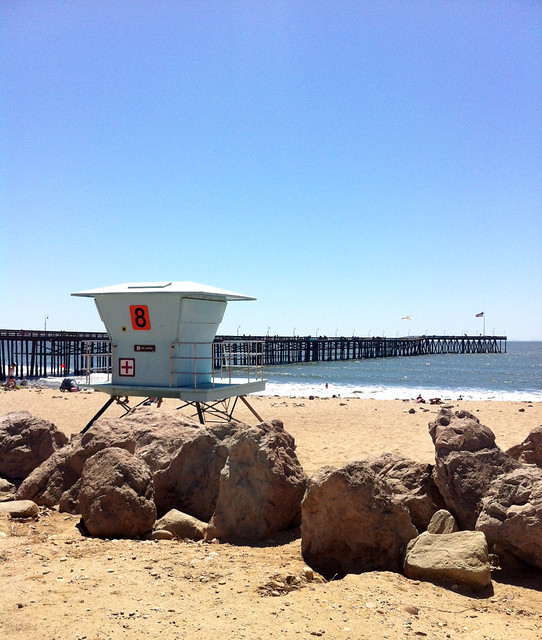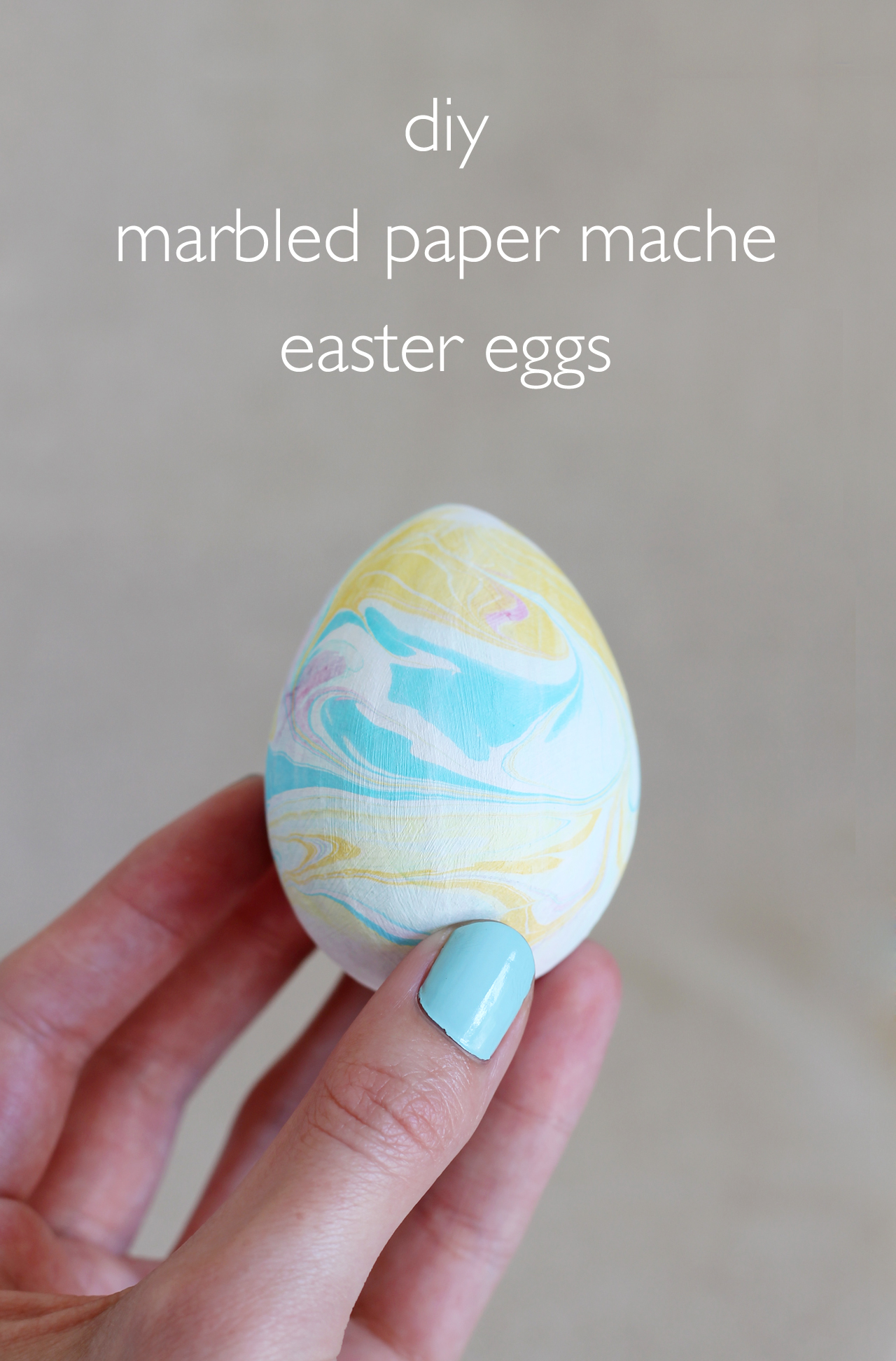
I have fond memories of marbling Easter eggs with my grandma every year as a kid. She wasn't big on craft projects, but she always had a
Paas Marble Kit ready for my sisters and me a couple weeks before Easter. I thought of her when I decided to marble some eggs this year. This time, however, I used traditional marbling supplies and techniques on paper-mache eggs so that I can enjoy them for many years.
This technique is time consuming and a little messy, but I'm sure you'll enjoy both the process and the results once you get going.
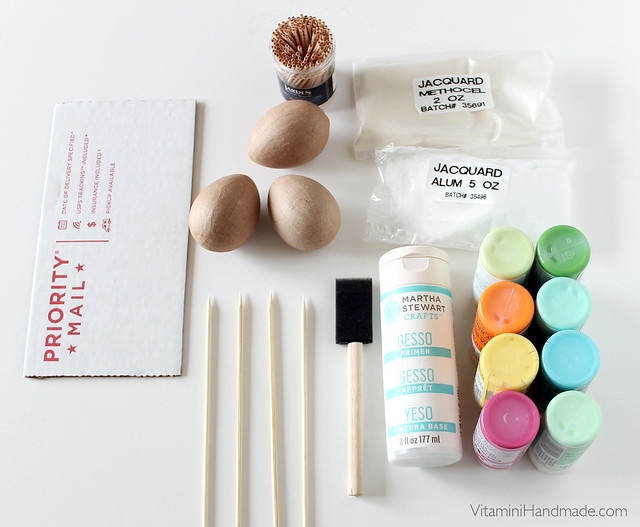
Here's what you'll need:
- Powdered Alum and Methocel. This Jacquard Marbling Kit comes with both in addition to some primary color paints (that I didn't use).
- Acrylic pants in various spring-time colors
- Paper Mache Eggs
- Gesso Primer or white acrylic paint
- Foam brush
- Bamboo skewers
- Toothpicks
- Cardboard scraps
Not shown: large mixing bowl, mixer, shallow tray or pan (about 2" deep), scrap papers, distilled water, household ammonia, small containers, drop cloth or newspapers to protect your work surface.
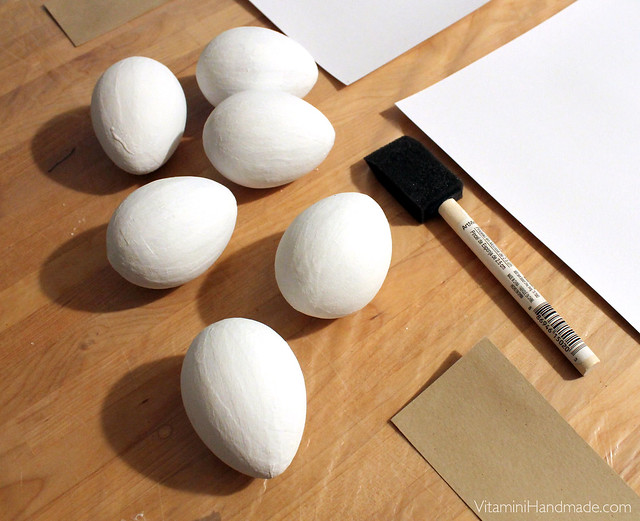 Prep:
Prep:
Prime the eggs with the gesso or white acrylic paint and the foam brush. Let dry. Mix the Alum with water per package instructions. Brush a light coat of the alum mixture on the eggs. The alum prepares the surface of the eggs to accept the marbled paint, so this step is very important. Let dry.
Mix the methocel with distilled water according to package instructions. I halved the batch indicated on the package and used 1/2 gallon of water to 2 tbs methocel powder. Mix with a mixer for 5 minutes to dissolve as much of the methocel as possible. Add 1/2 tablespoon of household ammonia to help dissolve the rest of the methocel. The mixture will be clear when it's fully mixed. Slowly pour into the shallow tray and let sit for at least 30 minutes or until all of the bubbles have dispersed.
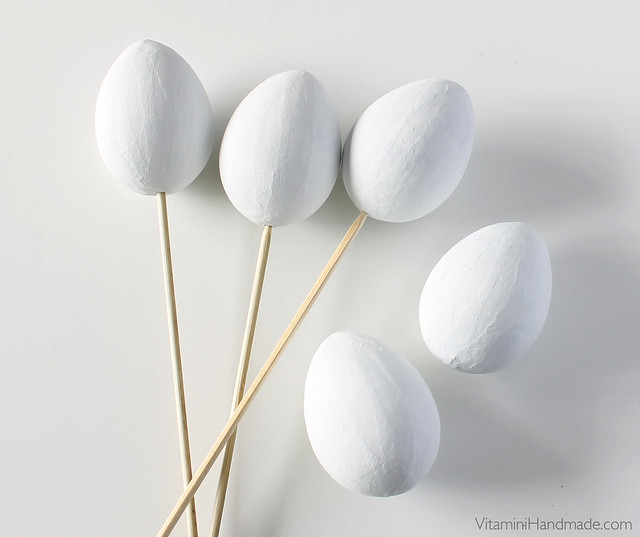
While you wait, carefully push the skewers into the base of the eggs. Cut a small X on the bottom of each egg with a craft knife to make it a little easier.
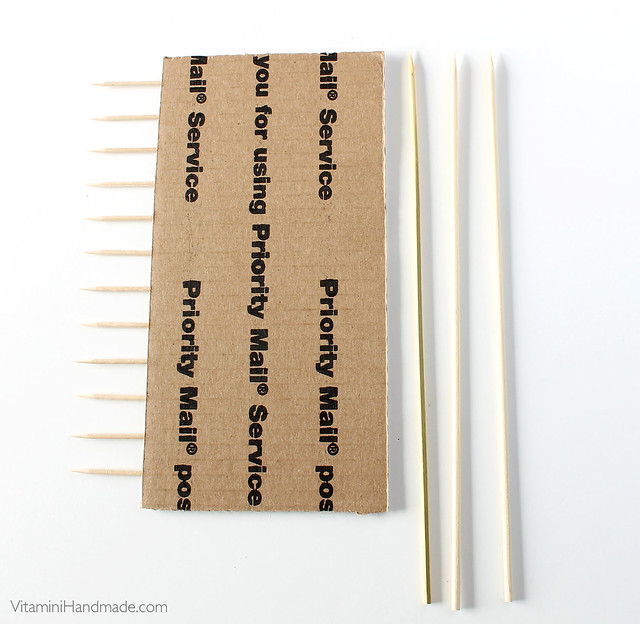
Make a rake by poking toothpicks into the end of a piece of cardboard at a regular interval.
Dilute each acrylic paint color in a small container with a little bit of water. The paints should be about as thick as whole milk.
Marbling (the fun part!):
After the 30 minutes, scrape the top of the tray with a piece of paper (like skimming the top of a swimming pool) to remove dust and bubbles. Dip a skewer into the first paint color and flick it over the tray. The paint droplets will settle on the surface and spread. Continue with other colors in a random pattern.
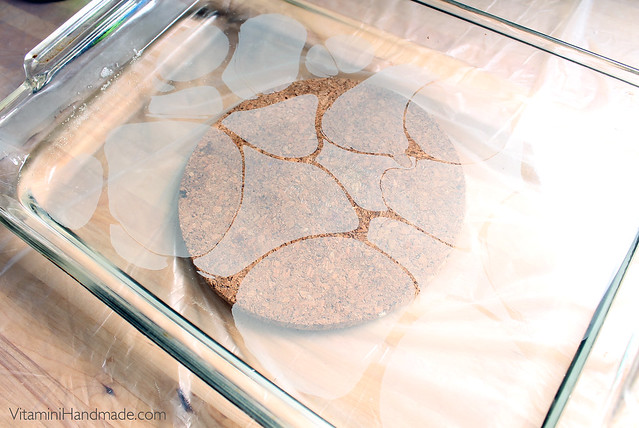
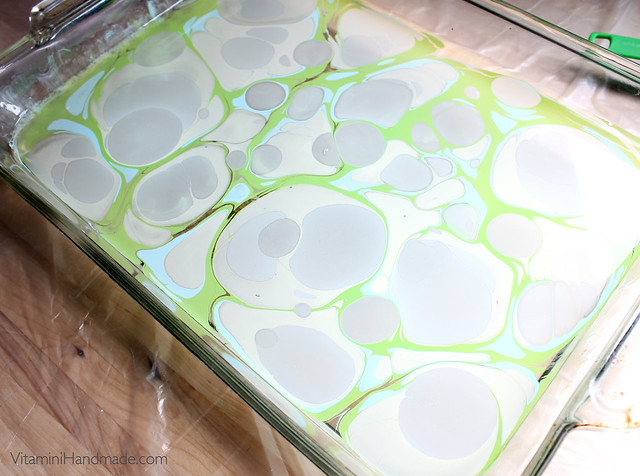
Use a skewer or the toothpick rake to swirl the paint colors in a pattern that you like. Slowly roll the egg across the surface of the paint to pick up the pattern. Rinse carefully with water to remove the methocel. Let dry vertically on the skewer in a jar or mug.
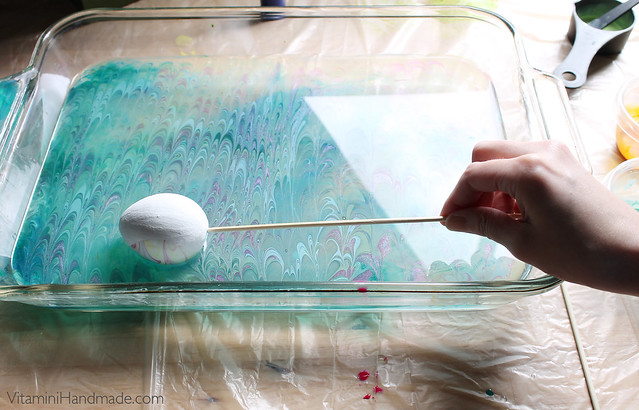
Repeat the steps with each egg. To start a new pattern or color combo, lay a piece of scrap paper on the surface and carefully lift off to remove excess paint. Start over with the same steps. Play with different color layers and swirl patterns.
Tips:
It's best to start each batch of color/pattern
with a clean methocel surface. Residual paint may affect the color and
pattern of the next application of paint.
Bright paint colors work
the best. Light shades of pink, light blue, and light yellow won't show
up as well as more saturated colors.
If the paint sinks to the
bottom of the tray instead of staying on the surface it is too thick.
Dilute with more water until it spreads across the surface. If the paint
sinks it will not affect the color/pattern.
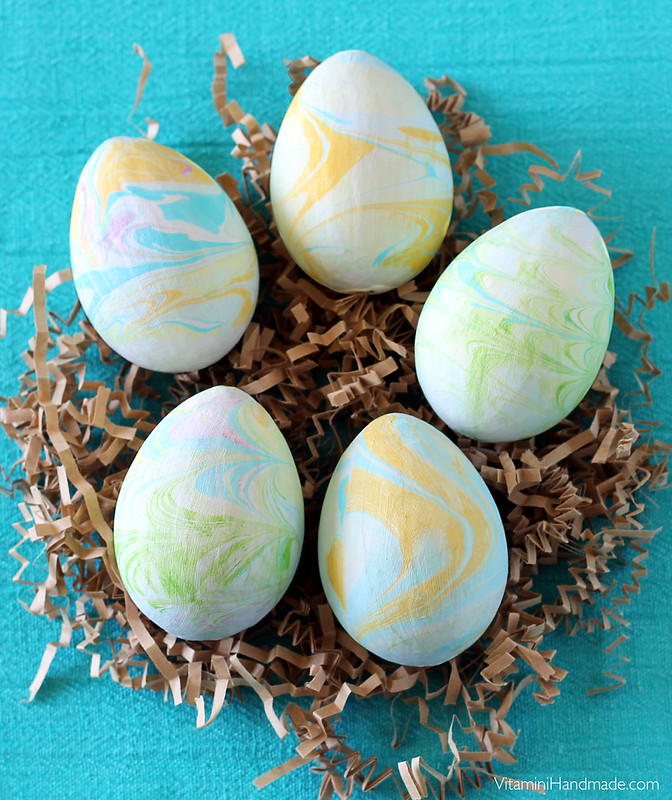
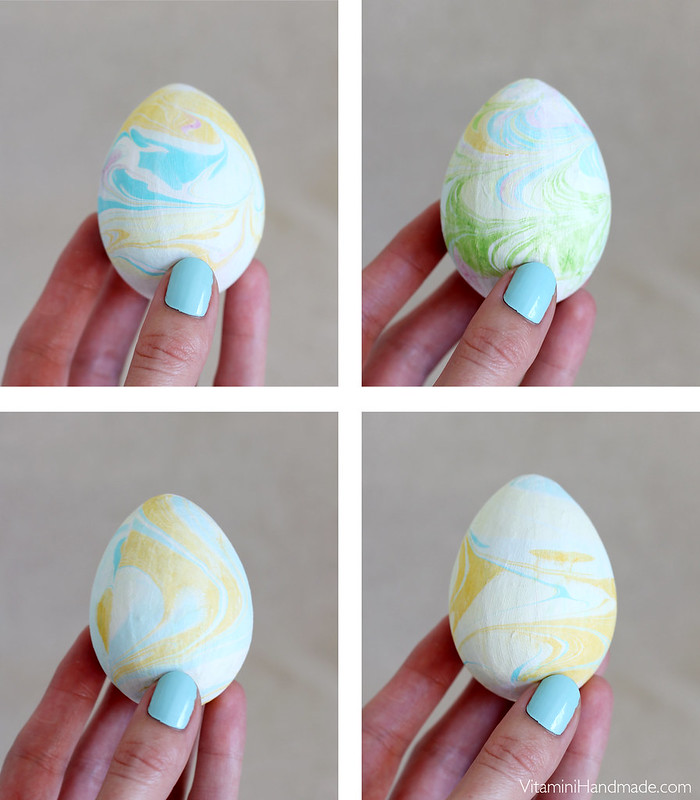 Cleanup:
Cleanup:
Cover the methocel to re-use later! It will keep up to a week at room temperature, longer if refrigerated. If you're done, pour it into a can or milk carton and discard. The package instructions said it can be poured down the drain if flushed with hot water, but I also heard that it can clog drains, so I played it safe. Save the alum, too, and treat other papers or fabric pieces to prep for marbling.

I had so much fun with this technique. Have you ever tried traditional marbling? If you want to read more about marbling and its history,
Design Sponge has an informative article all about it. (I just located this post and thought, "Hmm, I wonder if I commented on this when it was posted last year." Sure enough, I got the first comment spot. Too funny.)
Let me know if you try this. I'd love to see how your Easter eggs turn out!
*If you follow me on
Instagram or
Twitter you may have noticed my many posts about Craftcation. I got back late last night and am so inspired for my blog and handmade business. I'm going to share a post all about it later this week, so stay tuned!
